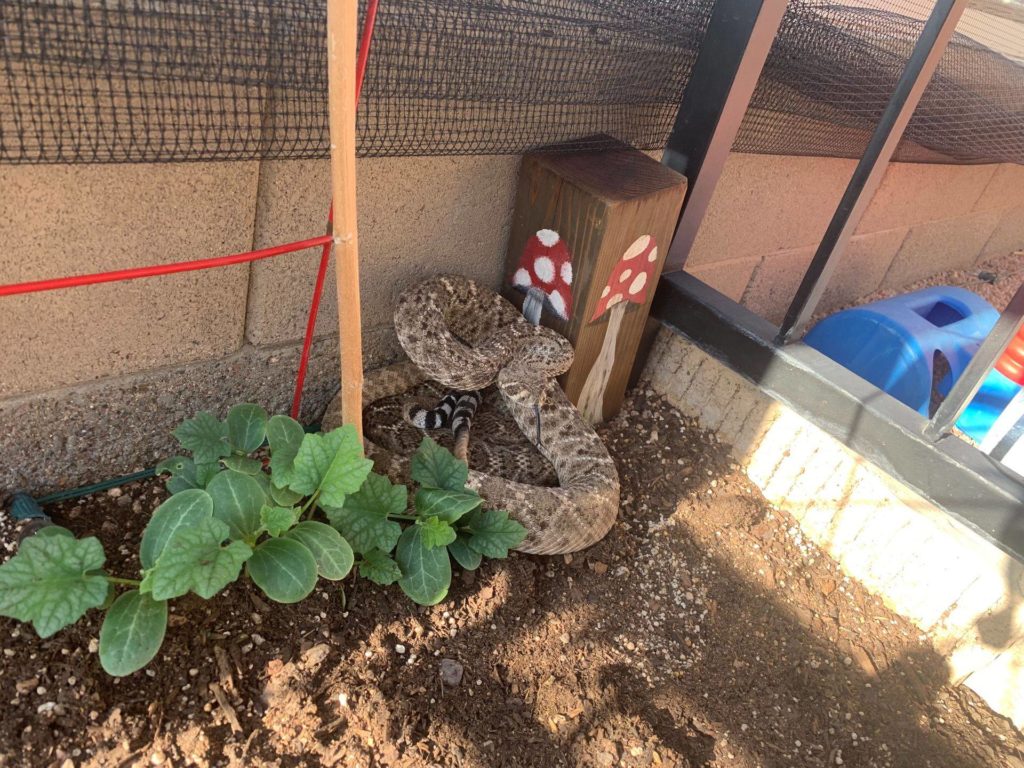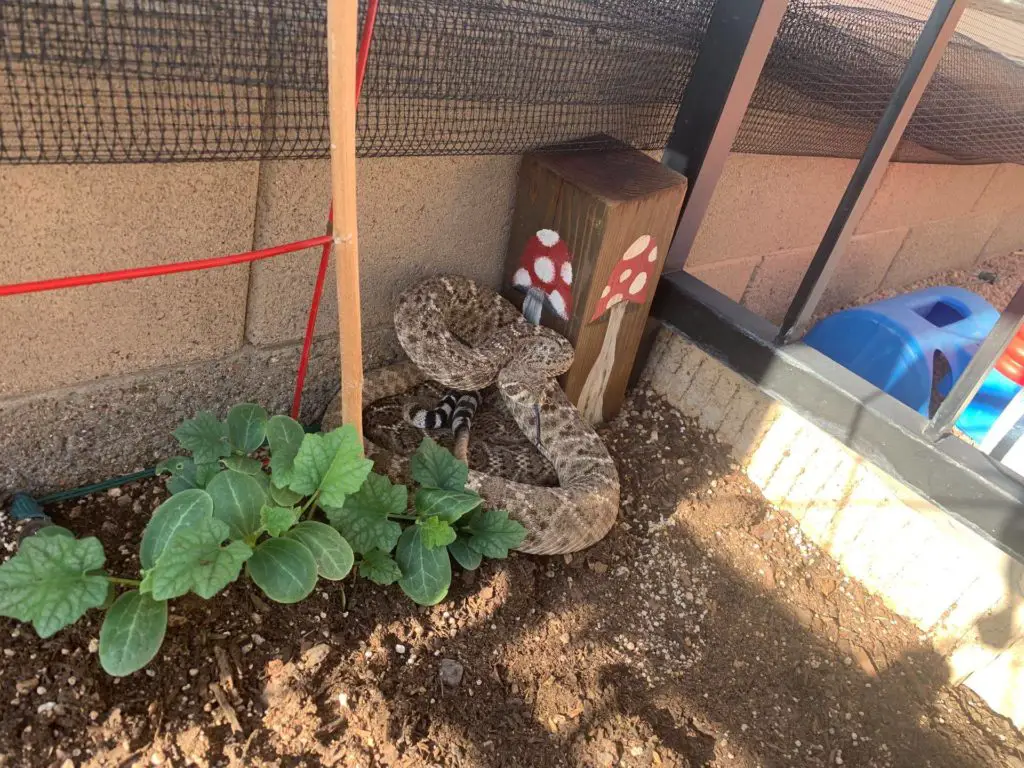Are you tired of worrying about venomous snakes slithering around your property? Rattlesnakes can pose a serious threat to you, your family, and your pets. Luckily, there are several ways to keep them away from your home without resorting to harmful chemicals or dangerous traps. In this article, we’ll explore some effective methods for deterring rattlesnakes and keeping your home safe.
Living near rattlesnakes can be dangerous, but there are steps you can take to keep them away from your home. Start by removing any debris or clutter near your house that could attract rodents, which in turn attract snakes. Seal up any cracks or holes in your home’s foundation and walls to keep snakes from entering. Consider using snake repellents or hiring a professional to install snake fencing to further deter these venomous pests.

Keeping Rattlesnakes Away From Your Home
Rattlesnakes are venomous snakes that can be found in many areas of the United States. While they play an important role in the ecosystem, they can also pose a danger to people and pets. If you live in an area where rattlesnakes are common, it is important to take steps to keep them away from your home. Here are some tips to help you do just that.
1. Keep Your Yard Clean and Tidy
Rattlesnakes are attracted to areas with plenty of hiding spots, such as tall grass, piles of leaves, and clutter. To keep them away from your home, it is important to keep your yard clean and tidy. This means mowing the lawn regularly, raking up leaves and debris, and removing any clutter or junk from your yard.
You should also trim back any bushes or shrubs that are close to your home, as these can provide hiding spots for rattlesnakes. Creating a clear space around your home can make it less attractive to these venomous snakes.
2. Seal Up Your Home
Rattlesnakes can enter your home through small cracks and gaps in the walls, doors, and windows. To keep them out, it is important to seal up your home as much as possible. This means repairing any holes or gaps in the walls, installing weatherstripping on doors and windows, and keeping screens in good repair.
You should also make sure that your garage door closes tightly and that there are no gaps around the edges. This can help to keep rattlesnakes out of your home and away from your family.
3. Remove Potential Food Sources
Rattlesnakes are attracted to areas where they can find food, such as rodents and other small animals. To keep them away from your home, it is important to remove any potential food sources. This means keeping your garbage cans sealed and stored in a secure location, and keeping pet food inside.
You should also take steps to control any rodent populations in your yard, such as sealing up holes and gaps in your home and using traps or baits if necessary. By removing potential food sources, you can make your home less attractive to rattlesnakes.
4. Use Snake Repellents
There are a variety of snake repellents available on the market that can help to keep rattlesnakes away from your home. These products typically contain natural ingredients, such as peppermint oil or sulfur, that snakes find unpleasant.
You can use these products around the perimeter of your yard, along the foundation of your home, and in other areas where rattlesnakes are likely to be found. Just be sure to follow the instructions carefully and use these products as directed.
5. Build a Snake-Proof Fence
If you live in an area where rattlesnakes are common, you may want to consider building a snake-proof fence around your yard. These fences typically have a mesh design that is too small for snakes to pass through.
They can be expensive to install, but they can provide a long-term solution for keeping rattlesnakes away from your home. Just be sure to hire a professional to install the fence, as it needs to be done correctly to be effective.
6. Educate Your Family
One of the most important things you can do to keep your family safe from rattlesnakes is to educate them about these venomous snakes. Make sure everyone in your family knows what a rattlesnake looks like, and teach them to stay away from any snakes they see.
You should also teach your family what to do if they encounter a rattlesnake, such as staying calm and slowly backing away. By educating your family, you can help to prevent potentially dangerous encounters with rattlesnakes.
7. Be Careful When Hiking or Camping
If you enjoy hiking or camping in areas where rattlesnakes are common, it is important to be careful and take precautions. Wear long pants and boots to protect your legs and feet, and carry a walking stick to help you avoid stepping on any snakes.
Be sure to stay on designated trails and avoid walking through tall grass or other areas where snakes may be hiding. By being careful and taking precautions, you can enjoy the outdoors safely and avoid encounters with rattlesnakes.
8. Know When to Call for Help
If you or a family member is bitten by a rattlesnake, it is important to seek medical help immediately. Call 911 or your local emergency number, and try to keep the affected area still and below heart level.
Do not attempt to suck out the venom or cut the wound, as these can do more harm than good. By knowing when to call for help, you can help to prevent serious complications from a rattlesnake bite.
9. Benefits of Keeping Rattlesnakes Away
While rattlesnakes play an important role in the ecosystem, they can also pose a danger to people and pets. By taking steps to keep them away from your home, you can help to protect your family and reduce the risk of potentially dangerous encounters.
By keeping your yard clean and tidy, sealing up your home, removing potential food sources, using snake repellents, building a snake-proof fence, educating your family, being careful when hiking or camping, and knowing when to call for help, you can keep rattlesnakes away from your home and enjoy a safer, more secure living environment.
10. Conclusion
Rattlesnakes are venomous snakes that can pose a danger to people and pets. If you live in an area where rattlesnakes are common, it is important to take steps to keep them away from your home. By following the tips outlined in this article, you can create a safer, more secure living environment and reduce the risk of potentially dangerous encounters with these venomous snakes.
Frequently Asked Questions
Living in an area with rattlesnakes can be dangerous, especially if you have young children or pets. Knowing how to keep them away from your home is crucial. Here are some frequently asked questions about keeping rattlesnakes away from your home.
What attracts rattlesnakes to a property?
Rattlesnakes are attracted to properties that provide them with shelter, food, and water. Tall grass, piles of debris, and cluttered areas are all attractive hiding spots for rattlesnakes. They also prey on small rodents, so if you have a lot of mice or rats in your area, you may be more likely to encounter rattlesnakes.
To keep rattlesnakes away from your property, it’s important to keep your yard clean and free of debris. Trim back tall grass and remove piles of leaves or sticks. Additionally, it may be helpful to remove any small rodents that are living on your property.
What are some natural rattlesnake repellents?
There are several natural rattlesnake repellents that you can use to keep them away from your home. One option is to plant certain types of plants, such as marigolds, that repel snakes. Another option is to use essential oils, such as cinnamon or clove oil, which have been shown to repel snakes.
You can also make a homemade snake repellent by mixing equal parts of cinnamon, clove, and cedar oils. Spray this mixture around the perimeter of your home and in areas where you have seen snakes in the past.
What should I do if I encounter a rattlesnake?
If you encounter a rattlesnake, the best thing to do is to slowly back away and give the snake plenty of space. Rattlesnakes will only attack if they feel threatened, so it’s important to stay calm and avoid startling the snake.
If the snake is in a high-traffic area, such as near your front door, you may need to call a professional to remove it. Do not attempt to handle or remove the snake yourself, as this can be dangerous.
How can I snake-proof my home?
To snake-proof your home, it’s important to seal any gaps or cracks in your foundation, walls, or roof. This will prevent snakes from entering your home through small openings.
You can also install snake fencing around the perimeter of your property. Snake fencing is typically made of metal mesh and is buried several inches into the ground to prevent snakes from burrowing underneath it.
What are some common misconceptions about rattlesnakes?
One common misconception about rattlesnakes is that they are aggressive and will attack humans on sight. In reality, rattlesnakes are shy and will typically only attack if they feel threatened or cornered.
Another misconception is that all rattlesnakes are venomous. While most species of rattlesnakes are venomous, there are a few non-venomous species that are often mistaken for their venomous counterparts.
In conclusion, keeping rattlesnakes away from your home is crucial to ensure the safety of your family and pets. Simple steps such as removing debris and sealing entry points can go a long way in preventing these venomous snakes from making their way into your yard. By also being mindful of your surroundings when exploring nature, you can further reduce the risk of encountering a rattlesnake.
Remember, if you do spot a rattlesnake on your property, it’s important to keep a safe distance and contact a professional wildlife removal service. With a little effort and awareness, you can enjoy your outdoor space without the worry of encountering these dangerous creatures. Stay informed and stay safe!


